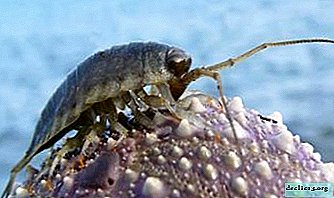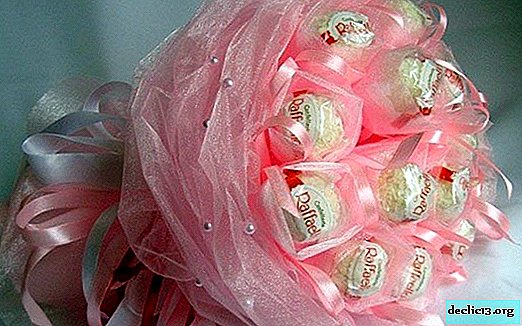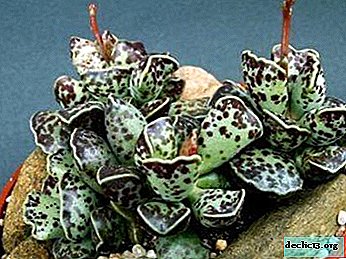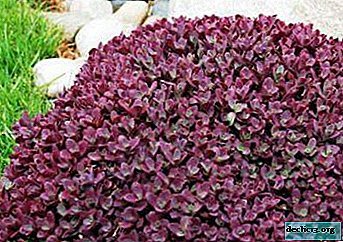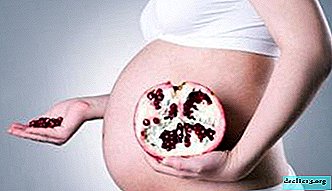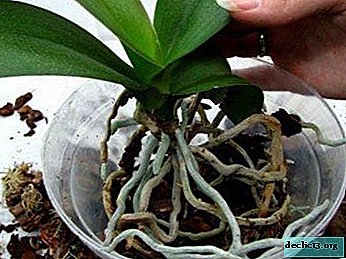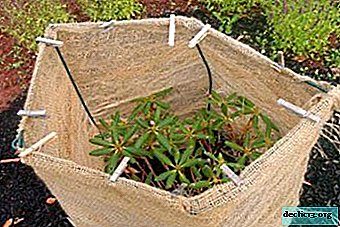Pest and disease control measures for homemade lemon
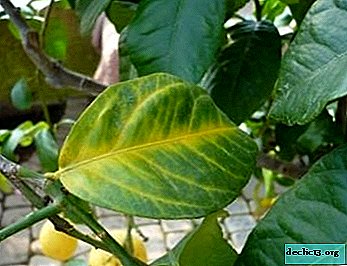 Lemon diseases often affect the leaves of a plant. These can be viral or fungal infections, parasitic insects.
Lemon diseases often affect the leaves of a plant. These can be viral or fungal infections, parasitic insects.
As a result of the disease, the leaves lose their color, lighten and become pale, grow more slowly, stick, and sometimes even curl up and die, and if you do not know what to do in each case, you can lose the plant.
How to distinguish the symptoms of diseases, prevent them or treat, we will tell in the article.
Causes of Poor Culture
Lemon is a plant demanding on the conditions of detention. It will respond to many mistakes in care by worsening well-being. The main causes of plant ailments are:
- weakening of plant immunity (often caused by maintenance errors);
- errors in care (excessive watering, improperly selected temperature range);
- pests (aphids, scale insects, mealybug);
- diseases of viral and fungal nature.
How to understand that the plant is missing something and needs to be treated?
 The plant is quite whimsical and quick to make it clear that mistakes have been made in caring for it, or an infection has joined. Lemon can be suspected of poor health by the following symptoms:
The plant is quite whimsical and quick to make it clear that mistakes have been made in caring for it, or an infection has joined. Lemon can be suspected of poor health by the following symptoms:
- a white or transparent sticky coating forms on the leaves (a symptom indicates the presence of parasite insects);
- leaves turn yellow or turn brown (both due to illness, and as a result of errors in care);
- dots or spots appear (with sunburn and infection);
- the tips of the leaves dry (from illness, damage to the root system or improper watering);
- leaves twist (as a result of improper care or infection);
- lemon drops leaves (may be a reaction to a change in the conditions of detention, or a sign of a serious illness).
Description of diseases and photos of affected areas
There are many diseases that affect the leaves of homemade lemon.
Chlorosis

Chlorosis is a common disease of indoor plants. It is caused by a violation of the formation of chlorophyll in the tissues of the leaf. The reason for this is a lack of iron. It can occur due to depletion of the soil or excessive irrigation. Chlorosis is manifested by yellowing of the leaves.
Initially, yellow stripes form between the veins of the leaf. If you do not take action, the disease progresses, covering the entire plant. The growth of shoots becomes smaller, the new leaves are small in size, they quickly turn yellow and wilt.
To treat chlorosis, you need to add iron to the diet of the plant in an easily digestible chelate form. To do this, you need to purchase a special drug (Ferovit, Ferrilen, Antichlorosis) or prepare a solution yourself.
To obtain iron chelate at home, you will need to dilute 10 grams of iron sulfate in a liter of water, and then add 20 grams of ascorbic acid. The resulting solution is watering and spraying a diseased lemon. Fertilizing through the leaf will have a more pronounced effect.
For the prevention of chlorosis, it is important to adhere to the following rules:
- choose the right soil (light, not too dense);
- monitor the acidity of the soil;
- Once a week, pour lemon acidified water.
Soot fungus

Sooty fungus is a by-product of the activity of lemon pests, aphids or thyroid glands. Insects cover the leaves of the plant with a sticky secret (paddy), creating a favorable environment for the growth of spores of sooty mold in the soil.
With this disease, the lemon is covered with a black coating that looks very much like soot. Not only leaves, but also stems suffer. The disease itself does not pose a serious danger, unlike the parasites that cause it.
The tactics of treatment include first of all the destruction of insect pests. Then it is necessary to wash away the coating from all parts of the plant, whitewash them with lime and properly ventilate the room. Prevention of sooty fungus includes a thorough examination of the lemon for the presence of parasites.
Scab (Wart)

The scab is caused by a pathogenic fungus that insects carry. The disease develops rapidly in conditions of high humidity. When infected, convex spots form on the leaves, branches and fruits, which then turn into holes.
The progression of the disease causes leaf falling, the appearance of cracks in the bark and defects in the fruit. The affected parts of the plant will need to be removed, and healthy shoots treated with copper sulfate. The use of the drug Strobilin will also be effective. For prophylactic purposes, in the spring, lemon is sprayed with copper or iron sulfate.
Sheet mosaic

Infectious disease caused by a virus. It appears in the form of a characteristic pattern on the leaves in the form of bright spots and stripes. Over time, the leaves become deformed, lose their shape. The tree begins to lag behind in growth. An infected plant can live long enough if well maintained.
Important! It is completely impossible to cure the disease, but you can maintain lemon with regular top dressing.Heavily damaged plants should be destroyed. Prevention consists in the timely detection of diseased plants, as well as preventive spraying with a weak solution of potassium permanganate.
Citrus cancer

Citrus cancer is a disease caused by a virus. Infection occurs through damage to the terrestrial part of the plants, as well as through the stomata of the leaves.
The first sign of the development of the disease is the appearance of dark brown spots resembling a tumor on the leaves and petioles of a lemon. Each of the spots has a depression in the center and is bordered by a yellow area.
Over time, formations appear on the fruits. Plants affected by the virus wither away, begin to lag behind in development, drop leaves and eventually die. The treatment of the disease does not exist yet. For preventive purposes, in the spring, lemon can be treated once with copper preparations.
Tristeza

Untreated viral disease. The disease is caused by the Tristez virus, which has about 30 variations. It is transmitted through insects and infected planting material. Externally, the infection manifests itself as massive yellowing and dropping of leaves.
Prior to this, thinning and lightening of the leaf veins can be noticed. Then the virus infects the bark and branches. Spreading through the vascular system of the plant, it disrupts the metabolism of nutrients.
As a result, the tree dies quite quickly. A lemon infected with tristeza is recommended to be destroyed.
Reference! It is believed that the disease is not amenable to treatment, however, there are references to the recovery of trees aged in the chamber at a temperature of 37-40 degrees for 66-100 days.Preventive measures include the use of virus-resistant planting and vaccination material, as well as pest control.
Anthracnose

The disease is caused by pathogenic fungi that develop in conditions of high temperature and humidity. At the initial stage, it is manifested by the appearance of dark brown spots on the tips of the leaves. In an advanced stage, leaves, ovaries and fruits fall off the lemon.
Often there is gum disease and necrosis of shoots. Anthracnose can lead to the death of the aerial part of the plant. Treatment is possible at an early stage and includes the removal of damaged parts and treatment with fungicides. Such drugs as cope well with the disease:
- Fitosporin;
- copper oxychloride;
- Bordeaux liquid.
Prevention consists in creating a temperature regime suitable for the plant and observing watering recommendations.
Melsekko

Melsecco is a dangerous incurable citrus disease. Pathology is caused by parasite fungi. The most serious forms lead to the death of the plant. Usually the disease starts with chlorosis of individual leavesbut at high temperatures it progresses rapidly, causing fading of shoots, falling of leaves and drying out of branches.
A characteristic feature of Melsekko is the staining of the wood in the affected areas in orange-red color (usually this is clearly visible on the cut). There is no specific cure for this disease.
The tree dies within 1-2 years with the standard course of the disease. The cause of death are toxins produced by the fungus. Prevention methods include pruning dried branches and timely destruction of dead plants, the use of disease-resistant varieties, as well as timely treatment of plant wounds with copper preparations.
Root rot

It occurs with excessive moisture in the soil, if the roots are damaged during transplantation or as a result of the activity of insects. Although the disease affects the roots of the plant, it manifests itself as a massive fall of leaves. Often, there are no other signs of damage.
Sometimes spots appear on the trunk of a lemon with an oozing muddy liquid. If a disease is detected, remove damaged areas of the root system. using clippers or pruners.
Sections are treated with ash or activated carbon. The plant is transplanted into new soil (it is necessary to refrain from watering for a week so as not to cause a relapse of the disease). From preventive measures, only compliance with the rules of agricultural technology can be distinguished.
Attention! It should be extremely careful when transplanting and not violate the watering regime.Plant pests
Shields

Scabies feed on the juice of the leaves of the plant. Settles on the back of the leaves. Despite its small size, it is distinguishable to the human eye. You should carefully examine the bottom of the leaves so as not to let the parasite appear. Insecticides (for example, diazinon) are used to destroy the scab.
Aphid

Aphids settle on young shoots that have not yet been covered with bark. The pest first affects the bottom of the leaf, then moves higher, simultaneously sucking the plant sap. As a result, the leaf folds and dies.
You can fight aphids by trimming the affected parts of the plant, if the parasite has not yet spread. Otherwise, you will have to resort to the use of an insecticide or infusion of garlic (4 heads are soaked for a day in 5 liters of water). After spraying, most insects die.
Mealybug

Mealybugs are close relatives of the scale insects. They are clearly visible on the plant even with the naked eye - their clusters resemble lumps of cotton wool. Depending on the species, pests infect the leaves and root system of the lemon, slowing down growth, causing yellowing and curling of the leaves.
If untreated, the plant may die. To combat the worm, they use chemicals (Fitoverm, Actellik) or alternative methods (for example, garlic infusion).
Care Rules
The occurrence of many lemon diseases is associated with errors in care. To minimize the risk of infection, you should carefully monitor the conditions of the plant:
- Air temperature. The optimal range is 18-23 degrees. In the cold season, it is advisable to provide lemon with a "cool wintering" at a temperature of 5-10 degrees.
- Watering. The most important nuance in growing citrus fruits. Lemon should be watered only after the topsoil has dried out with warm filtered or settled water. In the summer, it is advisable to plant a warm shower once a week.
- Top dressing. It is advisable to use organic fertilizers: humus or wood ash.
- Pest control. It is necessary to periodically inspect the plant and timely fight harmful insects.
Lemon diseases are quite serious and can lead not only to leaf defects, but also to the death of the whole plant. It is important to follow the rules of care and not to forget about preventive measures for diseases. To keep the plant healthy, you should use disinfected soil, make sufficient watering and fight pests in a timely manner.
Useful video
The video talks about how to deal with pests on a lemon:

